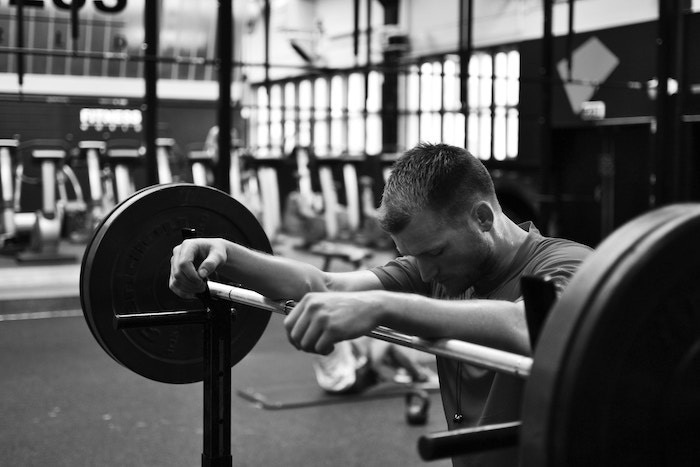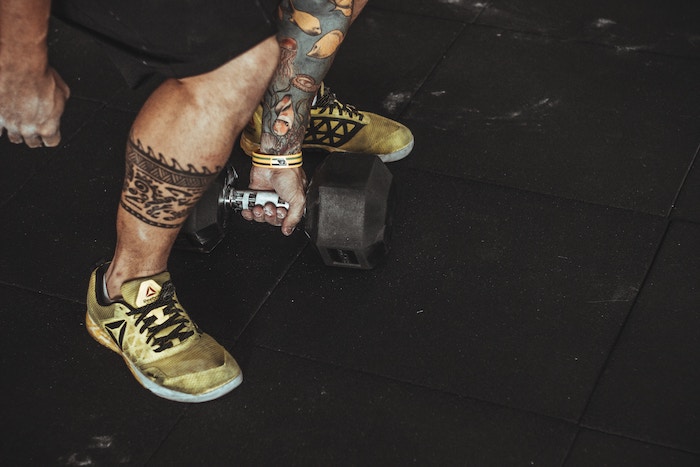Performing under pressure: choke or clutch?

What is commonly known as “choking” in sports, has been extensively studied in Psychology. The cognitive, physiological and behavioral mechanisms underlying breakdowns are of interest when trying to peak performance in elite athletes. At some point, any athlete will be faced with poor performance in competition. Understanding the mental aspects associated with failed execution will make the difference between coming back stronger or slowly falling into mediocrity.
In this sense, we find that the psychological consequences of that first setback is what makes or breaks an athlete (Sutton & McIlwain, 2015). Let’s take for example Rich Froning’s epic fail on the rope climbs in the 2010 CrossFit Games. Or Tia Clair-Toomey’s strategic error during the finals in the 2016 CrossFit Games. Both individuals misjudged the situation at hand and dropped the ball under pressure.
After a much needed period of self-pity and frustration, they bounced back in notorious fashion. Both went on to win several CrossFit Games’ titles in a row. Froning made rope climbs one of his best movements. Tia went from being consistent near the top, to being alone at the summit for any and every event.
The goal of this article is to immerse in the psychological aspects that explain breakdowns in performance. Then, with that knowledge, I’ll discuss how to control the effect of these mechanisms to our advantage, leading to improved execution under pressure.

Why do we choke under pressure?
Before jumping into the how, we need the why. Pressure exerts a strong influence in performance but what are the specificities? The body of literature in this regard strongly supports two streams of models: self-focus theories and distraction theories (Sutton & McIllwain, 2015).
Self-focus theories
The main premise of self-focus theories is that situations where performance is evaluated lead to self-consciousness. This makes the athlete try to control motor processes that must be left automated, resulting in impaired performance. Other models (Baumeister & Showers, 1986) have added mediating factors to this theory: reward and punishment contingencies, task complexity or skill level, among others. Masters (1992) went a step further and claimed that explicit knowledge of the skill is what interferes with proper execution. When the athlete considers that it is paramount that he performs well, attempts to control execution using explicit knowledge (the how-to) surface.
The cornerstone of these theories is that self-consciousness is induced by pressure. When in early stages of skill acquisition, controlled processing is necessary to monitor and perfect the skill. Slowly, the mastery evolves to the point where it is no longer necessary to exert this level of attentional processing; it becomes an automated skill. Self-consciousness brings you back to stage one. Paradoxically, consciously attempting to execute an automated skill produces an unwanted effect: failure.
Distraction theories
“Performance pressure generates worries about the situation which compete in working memory with the control operations that govern task performance, impairing those processes and, consequently, performance.” (Sutton & McIllwain, 2015) For these theories, the fundamental aspect is the limitations that restrain our working memory. When executing any task, our working memory will be under heavy demands. We need to analyze the information we receive from the competition at the same time we are executing the movements. Resources for our working memory are limited as it is. If we try increase the demands by introducing negative thoughts or self-focus, resources are spread too thin, distraction ensues and we hinder our performance.

From choke to clutch
Now that we know what happens when we choke under pressure, it’s time to switch our focus. What are the psychological characteristics of “clutch” performances? The kind of athlete that hits a winning 3-pointer in the last second or the one that nails the top lift in the last attempt. Swann et. al (2017) investigated these mechanisms to build an integrated model of the mental states that occur in clutch performances. I’ve selected but a few to keep it short and concise.
Trust your training
Pretty sure you’ve heard that before. But science supports the statement. Both automatic and controlled processes are required for optimal performance and you need to know when to put your working memory to the limit and when not to.
As we know, sports skills that take up a lot of space in working memory, will be more subject to failure. “Chaos” (2018 CrossFit Games) is the kind of event where you need to rely on your working memory and hope for the best. You know not the rep scheme or the movements, you will be needing to come up with strategies non-stop if you wanna make a run for 1st. That means your working memory needs to divide its resources between task execution and problem solving along with decision-making. It’s a calculated risk that you must take in order to go the extra mile.
In contrast, motor skills that are controlled by automated processes will only be likelier to fail in the event that pressure-induced attention impairs these processes. An example of this would be a 1RM event. You already know how much you’re able to lift. You’ve practiced said lift a couple million times in a variety of settings. Of course you gotta play the numbers game, but you need to just stand up to the bar and rip it off the floor. Your brain knows damn well how to perform the movement, just let it do what it needs to.
Stay optimistic and avoid negative thoughts
Easier said than done, right? I know. But it’s still important to keep it in mind. Self-talk, as discussed in another post, will guide our emotional processing and monitor our performance. If we keep it safe from negativity, self-doubt and so forth, our rate of success will increase significantly.
Perceive control of your execution in training and competition
Another aspect that is seen among athletes who had a clutch performance is a higher perception of control. Successful task execution is in their hands. It depends on their level of focus. No distractions. So, point your locus of control inside in training and competition. You will reduce feelings of uncertainty when competition time rolls around. If you know your worth, you performance will be up to par with your expectations.
Christensen, W., Sutton, J., & McIlwain, D. (2015). Putting pressure on theories of choking: Towards an expanded perspective on breakdown in skilled performance. Phenomenology and the Cognitive Sciences, 14(2), 253-293.
Swann, C., Crust, L., Jackman, P., Vella, S. A., Allen, M. S., & Keegan, R. (2017). Psychological states underlying excellent performance in sport: Toward an integrated model of flow and clutch states. Journal of Applied Sport Psychology, 29(4), 375-401.
